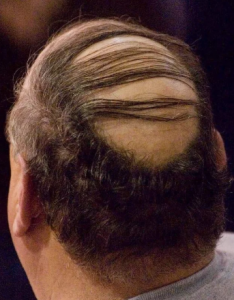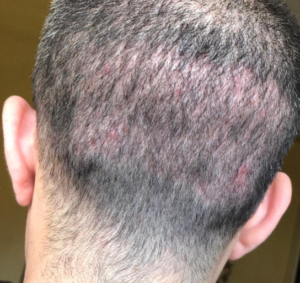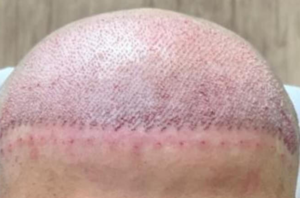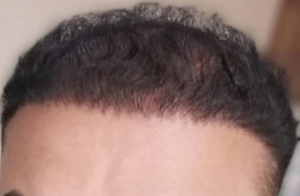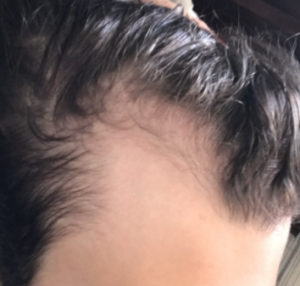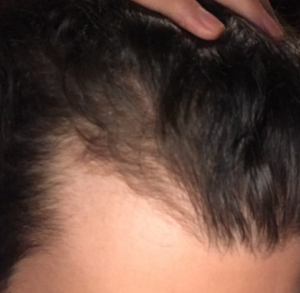This patient went to Turkey for FUE and now has the huge wound on his head. All of the skin from the area fell off and now the wound probably needs to be skin grafted once the infection is resolved. This resulted from loss of blood supply to this area. This is another example of FUE work performed by someone who didn’t know what they were doing.
It has come down to this, there is no doubt that I will lose all my hair, so I either get a transplant or go bald. The thing is that I live in Sweden and it’s kinda pricey here. I know “You get what you pay for” but I kinda want to look in at the opportunity of getting one in another country. I talked with a doctor that had gotten one, but he couldn’t say where he had gotten his. So just wanted to ask if anyone got any information that could help about where to get one maybe?
There are many good doctors in South America, Mexico and Europe (including easter Europe) where prices are less than the US so if you are going to consider traveling to save money, find some of these excellent doctors. In Turkey, there are also some excellent doctors but they are not the cheap ones so you will pay Eastern European prices for them but you can get good quality. The amount of money they charge tells you if they have delegated the surgery to non-physicians so that they can offer if for ridiculously low prices.
My front, top and crown have changed character as I am progressing with my balding and losing some of the hair. With the transplanted hair look like the hair that is now in the back or will it take on the character of the hair that is falling out?
Most of the transplanted hair carries the character from its source which is the back and side of the head. Hair that is falling out and/or miniaturizing hair in the front, top or crown area often show a different hair characteristic from what was there before the balding process started.
What does that tell you about my response to finasteride?
I don’t remember seeing anything written (published) that relate testosterone blood levels to finasteride effectiveness. There is some logic that suggests that high natural testosterone men might be less responsive to finasteride but I could not find that published. We do know, however, that higher testosterone levels might lead to earlier initiation of the balding genetics.
This man either had (1) too many grafts taken from his donor area, (2) a lower than normal donor density unable support the FUE he received, (3) very fine hair that could not over his donor area after his FUE was Done of (4) the surgeon used a large punch. Patients believe that FUE is a scar-less surgery but this shows that under certain condition as defined above, this is not the case.
When doing a hair transplant, you must understand more than the technical issues of putting grafts into holes on the head. The person doing this obviously didn’t understand this. It was done by a clinic in Turkey that had no surgeon, no artistry and no knowledge of what makes a good hair transplant. This picket fence can be seen coming from the post operative photo on the left
https://www.ncbi.nlm.nih.gov/pmc/articles/PMC6026438/
Although Recycling transplanted hair is a reasonable technology, the need for this obscures the fact that to move it means that it may have been done wrong in the first place. Doing it right is better than doing it wrong and then having to move the hair as this article shows.
I use 3 pr 4 ml daily of minoxidil and I am scared of developing cardiovascular sides. I am young and it has been 3 years that i have been taking it.
Does low dose oral min ( 1.5 mg ) is safer?
Like all drugs, there can be side effects and one of the many side effects can be dangerous to the heart. If you take minoxidil, as any drug, and you get side effect, speak with your prescribing doctor or if it is not a life altering drug like minoxidil, just stop it. Are you taking it orally now? If so, what dose are you taking? Generally, the 1.5mg oral dose is safe, but there are exceptions and that is why you need to see your doctor.
So I’ve been losing hair only only my left side of the hair line. And its gone pretty far back compared to the right. No sign of stopping. But one thing I learned was my scalp would hurt when I moved my hair and thats where I was losing hair. So where every it hurt, when I moved my hair, thats where it was thinning and I was losing hair. So why is that? and why am I still losing it.
Genetic balding is asymmetrical and it will eventually even up in time. If you dermatologist says it is folliculitis Decalvans, it requires your dermatologist attention. Never do a hair transplant with this condition.
I am 21 years old and have been on minoxidil for 7 months and my hair is falling out more than before I started it.
7 months of shed is probably not a shed from the minoxidil but rather an acceleration of your natural genetic hair loss. Are you unusually stressed or undergoing rapid weight loss? I am looking for accelerants.
I had a hair transplant done a few years back with a top doctor and am happy with the results. That said, I wish the hairline was a bit lower and straighter. I am considering getting another one to fix this.
Right before my first procedure, I met with the doctor briefly to discuss where the hairline was going to be. I was surprised by how un-sophisticated this part was. He just drew a hairline on, showed me a hand mirror, I said lets make it a little lower, and he did and that was it. However, its very hard to imagine what the hair is going to look like and what that hairline really means in terms of how it fits your face and features.
Thus, what I would really like is for some sort of computer simulation of where the hair is going to be and what its going to look like when its grown out, from all angles. Do any practitioners do this? And if not, what is the best way to do this myself, so that I can communication it to the doctor prior to my next procedure?
Some doctors use photoshop or some special software imaging system, but most have stopped because the photoshop illustration did not reflect the final result and it left the doctor with some liability. The reason for this is that if hair is fine, medium or coarse, the hair type makes a world of difference in the hair transplant. The thinnest result of course will occur with fine hair and the best results with coarse hair and the software doesn’t do justice to these distinctions.
An experienced doctor can work the final hairline with you on the day of the surgery. After thousands of these, I have to say that I don’t remember anyone who complained about their final hairline from my work. Experience is the best teacher.
Saw this online and how true is this? I get that many people are not as concerned with their hair like us in this sub and never track their hairline and density until they one day look in the mirror and realize they’ve lost a lot. What about guys who constantly monitor their hairline, take pics, compare to old photo’s, i.e really track everything regarding their hair. I for one do that and still have all of my hair (age 30).
Does that still mean I won’t notice it until I lost 30.000 hairs? As soon as I see any sign I’ll jump on finasteride so the “30.000 hairs “ theory only makes sense for people who literally never track their hair in my opinion.
Depending upon the size of the area, for most people with medium or coarse hair, they can lose 50% or more of their hair without seeing a difference. For people with fine hair, the visual effects of hair loss come on more quickly. One doctor in the 1980s, pulled out 50% of the hair on one side of the head on a man with black, medium weight hair and no hair loss. He took photos and had independent observers try to see which side had less. The answer was no one could tell and the photography failed to tell which side had less hair. This is important for a hair transplant surgeon to know Read this: https://baldingblog.com/hair-transplant-density/
Page 181 of 641

